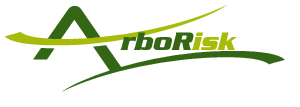Safety Pays
Safety Pays
Written by Eric Petersen, CIC
One of our goals at ArboRisk is to help tree care companies embrace the idea that safety should be looked at as a profit center versus as an expense. The idea is quite simple in that the safety efforts that you embark upon ultimately lead to higher productivity and profitability for your entire team because you are not dealing with injuries and all of the costs associated with them. Because not everyone buys into a statement like that immediately, I want to highlight a fantastic resource that you can use to illustrate this point…OSHA’s “Safety Pays” website.
OSHA’s Safety Pays website serves as an interactive tool that enables businesses to calculate the potential financial benefits of investing in workplace safety measures. It aims to showcase that by prioritizing safety, companies can not only protect their workers but also realize substantial economic advantages. The site is a testament to the fact that a safe workplace is a profitable one.
The Safety Pays website offers several key features that make it a valuable resource for tree services of all sizes:
Individual Injury Estimator – My favorite part of the website is a user-friendly interface (Individual Injury Estimator) that allows you to choose an injury type and enter your profit margin to determine how much that injury would cost your company both in direct and indirect costs.
For example, if an employee at a tree service suffers a shoulder strain, the estimated cost of that injury will total over $67,000!
In this example, I used a profit margin of 15%. If your profit margin is higher than that the financial impact to your company would be a little lower, however, if you’re running under that profit margin, the impact of this injury will be felt even more. The website calculated that the direct cost of the injury will equate to $32,023 and the indirect costs would amount $35,225 to total $67,248! In case those numbers don’t mean much to you, think about this. With a 15% profit margin, this injury would require the business to produce an additional $448,320 in sales to cover these costs.
Can you afford to do $448,000 of work for free?
Safety Pays Tool – The Safety Pays Tool is your chance to get a more customized experience and allow you to compare your company to the industry average. This tool is especially helpful when looking at budgeting for new equipment or perhaps investigating the cost/benefit of a full time safety director.
Educational Resources – The website isn’t just about numbers; it also provides educational resources and case studies that illustrate real-world examples of companies that have benefited from safety investments.
How can you utilize the Safety Pays website within your tree service?
During your next Safety Meeting, pull up the website and go to the Individual Injury Estimator. Ask your team to throw out an injury type. Then enter in your company’s target profit margin and reveal the results of the calculator to the team and watch their reaction. Even more powerful tie the estimated additional sales to the number of jobs that equates to by dividing the sales number by your average job cost. If these numbers don’t open people’s eyes within your organization, nothing will.
If you are looking to boost the safety culture within your company or perhaps just want confirmation that you are doing what you can, reach out to a member of the ArboRisk team or sign up directly for our Thrive Safety Package. We work one-on-one with tree care companies every day, helping them get every one of their employees home safe each night.


Recent Comments